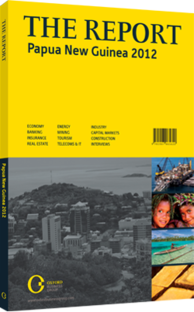OBG talks to James Lau, Managing Director, Rimbunan Hijau PNG

InterviewJames Lau
How developed is PNG’s timber industry? What is its potential as an economic driver?
JAMES LAU: The industry is a very significant part of PNG’s economy. It contributes 2% to GDP, makes up 5% of exports and employs 10,000 people. It has a significant impact in rural areas, where employment opportunities are scarce and infrastructure spending by timber companies for health or education facilities and roads can outstrip government spending. It has enormous potential as an economic driver if resources are managed sustainably. China is now generally recognised as the global manufacturing centre for timber products. PNG’s proximity to China makes it an ideal exporter to this market and other importing countries in the region. Output from PNG’s timber industry could be two to three times the current level, which would significantly add to the manufacturing sector.
What are the key export markets for timber, and how will they evolve over the next few years?
LAU: The key export markets are China, South Korea and Australia. There is the threat of a global downturn that will push demand down, but growth prospects for all three markets are solid compared with Europe or the US. How these markets will evolve for PNG exporters is dependent on demand and familiarity with our products. In China, demand has not dropped and growth is expected to continue. Chinese importers are also now very familiar with our products. If both of these trends continue, China will remain a major market both for us and for other businesses in PNG.
How fierce is the competition within the timber industry in PNG, and are we likely to see more international firms entering the market?
LAU: The difficulty for timber firms in the past has been making their operations profitable. This is why a lot of Australian and Japanese firms pulled out of PNG in the early 1990s. There is always competition for timber resources between firms, but there is less competition in manufacturing and processing. This is where Rimbunan Hijau has a competitive advantage over other companies. Demand for both raw and processed timber products is still strong, so it is possible that other firms will enter the market, and competition is always a good thing. Most of the projects are remote and the operators have contractual obligations to establish social infrastructure, such as health and education facilities. Infrastructure development obligations are negotiated during the project tender and reflected in the timber permits.
How evolved is downstream activity in the timber industry, and what areas of opportunity are there?
LAU: Both industry and the government have been moving towards increasing the level of timber manufacturing. However, downstream processing is underdeveloped and there are still many opportunities in the domestic market. Internationally, it is difficult to compete with Malaysia and China, where processing and manufacturing is more efficient. Recovery rates for inputs in PNG average 40%; in China and Malaysia they are up to 80%. Infrastructure is still a major barrier to making processing industries more efficient.
How challenging are the land ownership issues for foreign investors to negotiate?
LAU: There are always challenges for the private sector. What makes PNG different from other countries is that most forested land is not state owned, and there is little or no formal land titling. With a few exceptions, you cannot find the owner of a piece of land and offer money for it. All sectors place different demands on developers, but it ultimately comes down to negotiating with a large group of people rather than with an individual or single business entity. This requires patience and acceptance that consulting with landowners is a rolling process with many challenges. This applies to all resource extraction sectors, from forestry and agriculture through to mining.
You have reached the limit of premium articles you can view for free.
Choose from the options below to purchase print or digital editions of our Reports. You can also purchase a website subscription giving you unlimited access to all of our Reports online for 12 months.
If you have already purchased this Report or have a website subscription, please login to continue.

